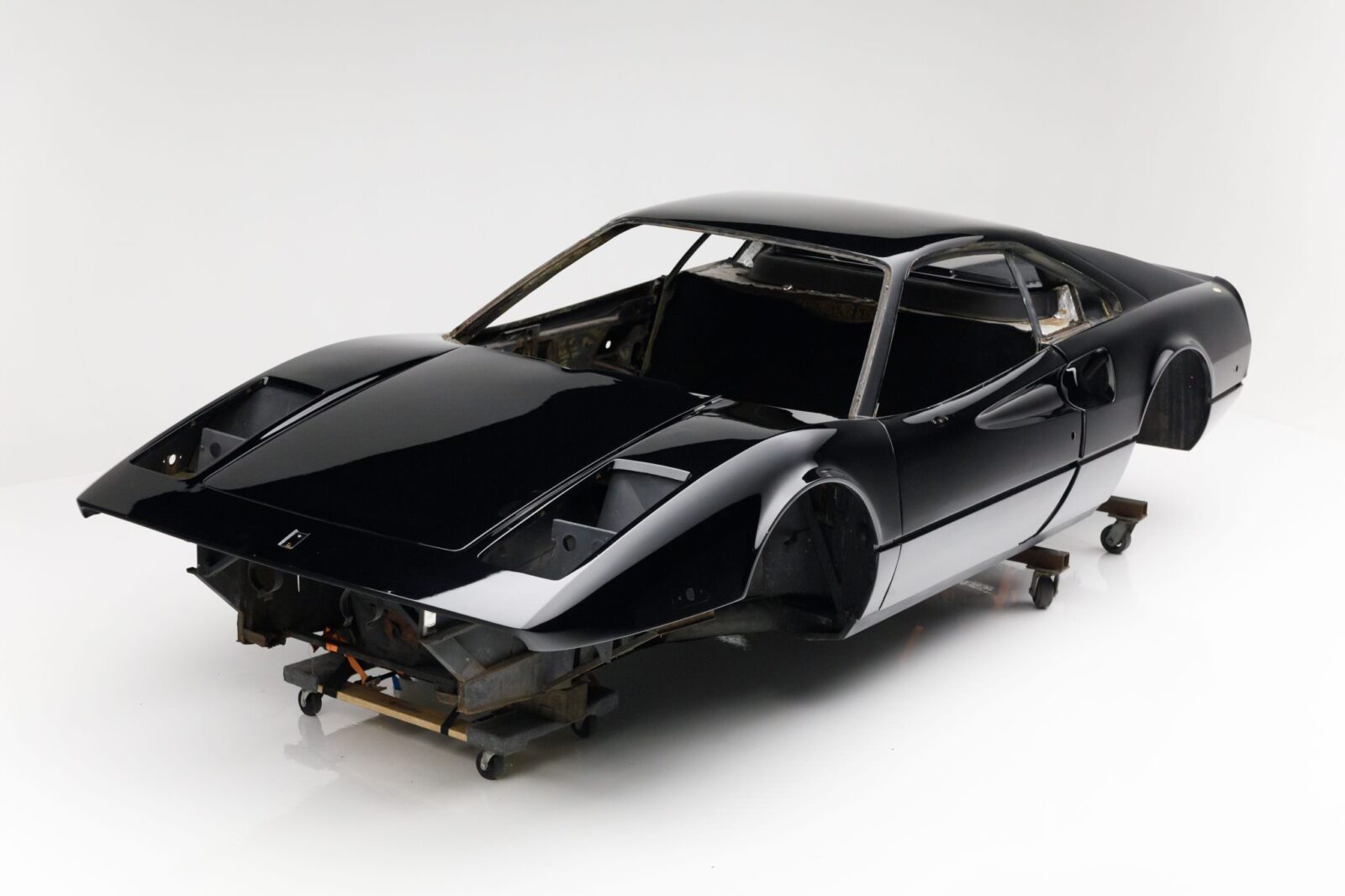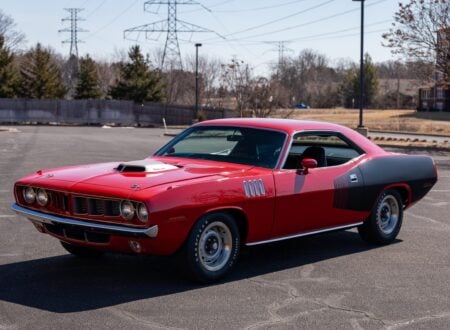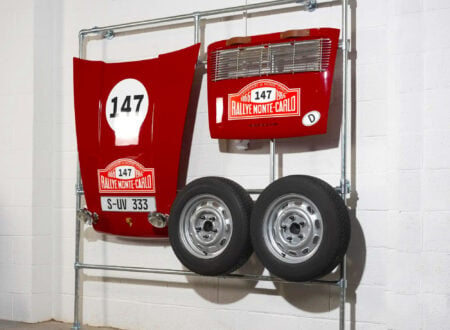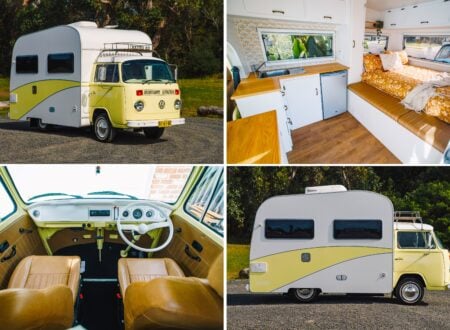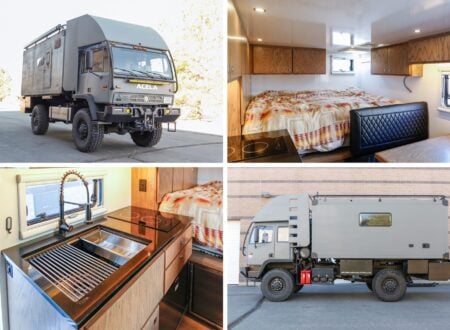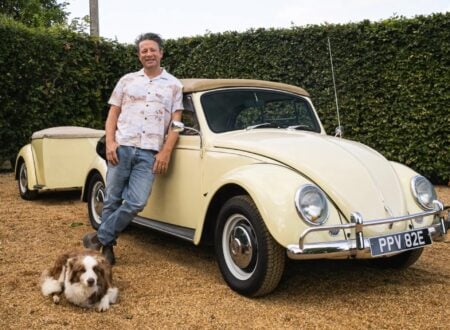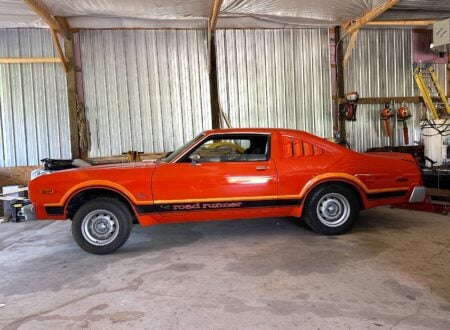This is a 1977 Ferrari 308 GTB project car that comes disassembled but includes a 2.9 liter V8, a 5-speed manual transaxle, 14″ Campagnolo wheels, a steering rack, suspension and brake components, and much of the interior.
The car is finished in what appears to be a recent coat of jet black paint, it’s currently sitting on a dolly, and it’s being offered at no reserve by the selling dealer in California with a clean Montana title and a large collection of associated parts.
Fast Facts – The Ferrari 308 GTB
- The 1977 Ferrari 308 GTB project car is being offered for sale in largely disassembled condition. It includes all the key components like the 2.9 liter V8 engine, 5-speed manual transaxle, wheels, steering rack, suspension, brakes, and much of the interior. The body is finished in black paint and is mounted on a dolly. It’s being sold with a clean Montana title and numerous associated parts by a dealer in California.
- The Ferrari 308 GTB, introduced in 1975, was designed as a successor to the Dino 246 GT and a competitor to the Porsche 911. It shared chassis elements with the Dino and was styled by Leonardo Fioravanti at Pininfarina. Initially produced with a fiberglass body (known as “Vetroresina”), Ferrari switched to steel bodies in mid-1977, increasing weight by 150 kgs. The 308 GTB remained in production until 1980.
- Powered by a 2.9 liter 90° V8 engine with double overhead cams and Weber carburetors, the 308 GTB produced 255 bhp in European spec and 237 bhp in US spec due to emissions equipment. It featured a dog-leg 5-speed manual transmission. The GTB (fixed roof) was slightly less popular than its targa-top sibling, the GTS, with 2,897 GTBs produced compared to 3,219 GTSs.
- Today, the 308 GTB is valued as an analog Ferrari from before the era of electronic driving aids. It’s considered one of the more affordable Ferraris, typically selling in the high five to low six-figure range. This particular project car will require significant time, money, and skill to restore, including potential engine and transmission rebuilds. It’s being auctioned on Bring a Trailer with no reserve.
The Ferrari 308 GTB – An Affordable Prancing Horse
The Ferrari 308 GTB would be the true successor to the Ferrari Dino 246 GT, and interestingly, it would be the first and only Ferrari in history to debut with a body largely made of fiberglass. There were many links between the 308 GTB (and GTS) and the Dino 246 GT (and GTS), both cars shared version of the same tubular steel chassis and a number of styling similarities, perhaps unsurprisingly given that both cars were penned by Leonardo Fioravanti at Pininfarina.
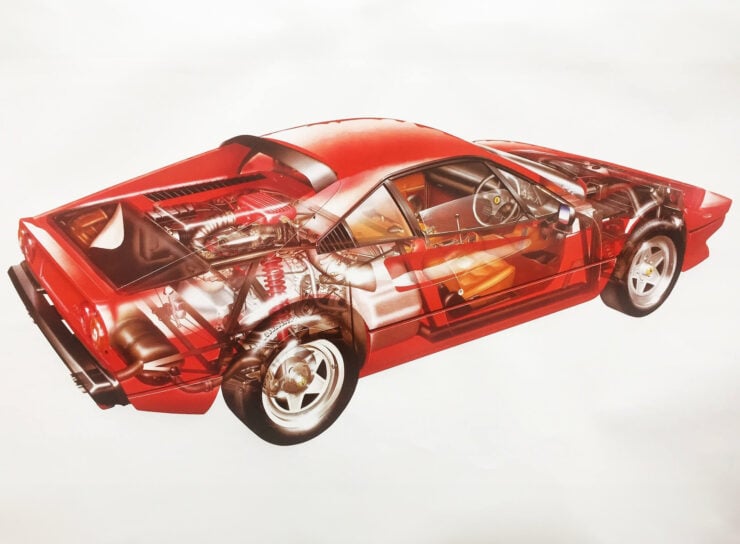

The Ferrari 308 GTB was positioned as Ferrari’s key competitor for the Porsche 911, alongside the Ferrari 308 GT4 which used a longer wheelbase version of the same chassis, different body styling, and a version of the same Ferrari V8 engine.
The key difference between the 308 GTB and the 308 GTS was the roof – specifically, the GTB (Grand Tourismo Berlinetta) had a fixed roof, and the GTS (Grand Tourismo Spider) had a removable targa top that could be stowed behind the seats in the cabin when not in use. The GTS would prove to be slightly more popular with buyers, with 3,219 examples of the GTS selling versus 2,897 examples of the GTB.
The 308 GTB was powered by the 2.9 liter 90º Ferrari V8 in dry sump configuration with double overhead cams, two valves per cylinder, four twin-choke Weber 40DCNF carburetors, and a single coil ignition. Output for European-spec cars was 255 bhp at 7,700 rpm, with US-spec cars getting 237 bhp at 6,600 rpm due to the fitment of emissions devices.
When it was introduced in 1975 at the Paris Motor Show the 308 GTB was fitted with an almost entirely fiberglass body, as noted above, with the exception of the aluminum alloy front lid. These early fiberglass-bodied models would be retroactively named the “Vetroresina” cars (meaning “Fiberglass” in Italian).
By mid-1977 this experiment in fiberglass would be terminated, the bodies were all being made at Carrozzeria Scaglietti and production shifted from fiberglass to steel, adding 150 kgs (331 lbs) to the curb weight and slightly slowing the car down in the process.
Many purists prefer the steel bodied cars, with fiberglass having had its reputation tarnished by countless cheap kit cars over the years, though Ferrari would still use some fiberglass panels in future cars due to the material’s inherent qualities – primarily its low weight and the fact that it can’t rust.
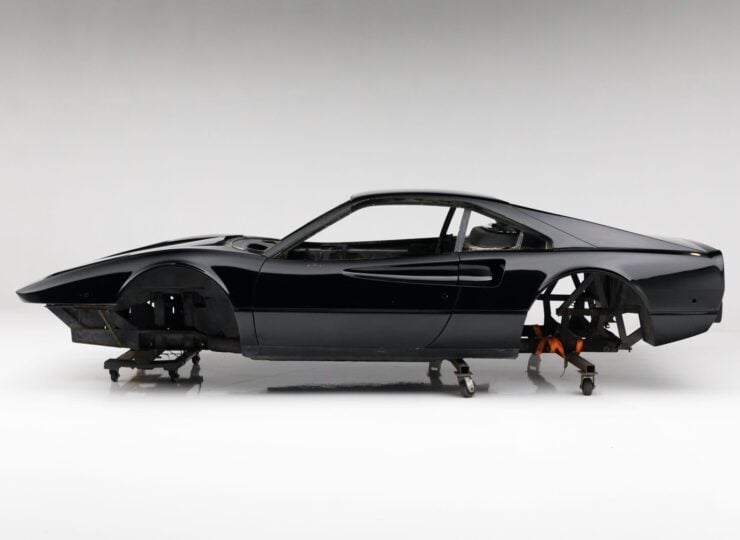

The 308 GTB would remain in production from 1975 until 1980, after which it was replaced with the very similar 308 GTBi – a car that was essentially a minor evolution of its predecessor now offering Bosch K-Jetronic mechanical fuel injection. The Dino GT4 which had sold in parallel with the 308 GTB would be phased out entirely in 1980 and replaced with the Ferrari Mondial.
In 1982 the 308 GTB Quattrovalvole would make its appearance at the Paris Motor Show, offering a version of the 2.9 liter F106 AB V8 engine with four valves per cylinder paired with the Bosch K-Jetronic system of the 308 GTBi.
Today the 308 GTB is looked at as one of the truly analog Ferraris from a time long before electronic systems like traction control, ABS, or paddle shift transmissions became commonplace. The 308 GTB remains one of the more affordable Ferraris, typically selling for high five figure or low six figure sums depending on the specific vehicle.
The Ferrari 308 GTB Project Car Shown Here
The car you see here is a 1977 Ferrari 308 GTB project car that is now being offered for sale in disassembled condition. It does come with the lion’s share of the parts required to finish it, including the engine, gearbox, interior, suspension, brakes, chassis, and body – however it’s important to note that it’s still going to require plenty of time, money, and skill to get it back on the road.
The listing doesn’t note if the engine and transmission has been rebuilt already, so any prospective owner would likely need to budget for having this done – or doing it themselves – before the car is given its final assembly.
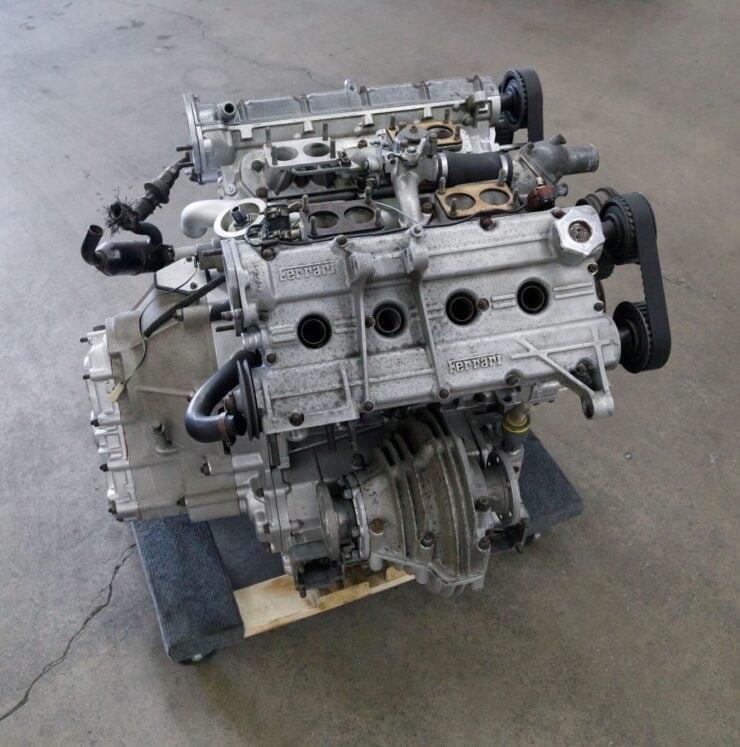

The 2.9 liter F106 AB V8 engine is known for being more simple to work on that many other Ferrari engines of the time. It has an alloy block and heads, double overhead cams per bank spun with timing belts, two valves per cylinder, and Weber carburetors, sending power to the rear wheels through a dog leg 5-speed manual transmission.
This car is now being offered for sale out of Costa Mesa, California on Bring a Trailer with no reserve, a clean Montana title, and a large collection of additional parts. If you’d like to read more about it or register to bid you can visit the listing here.
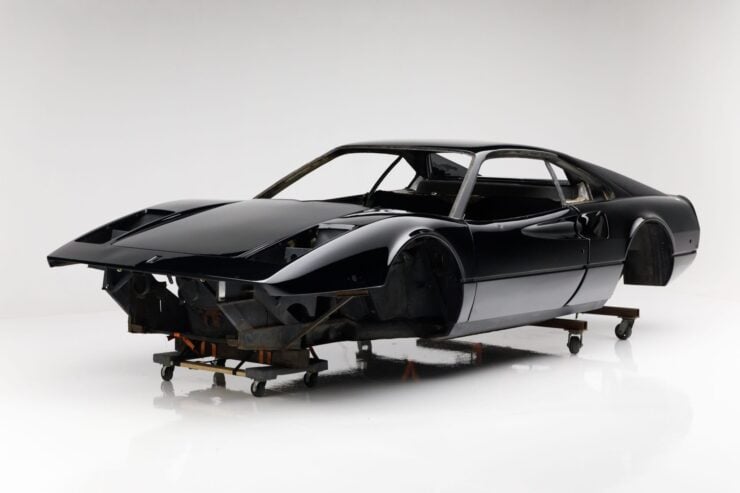
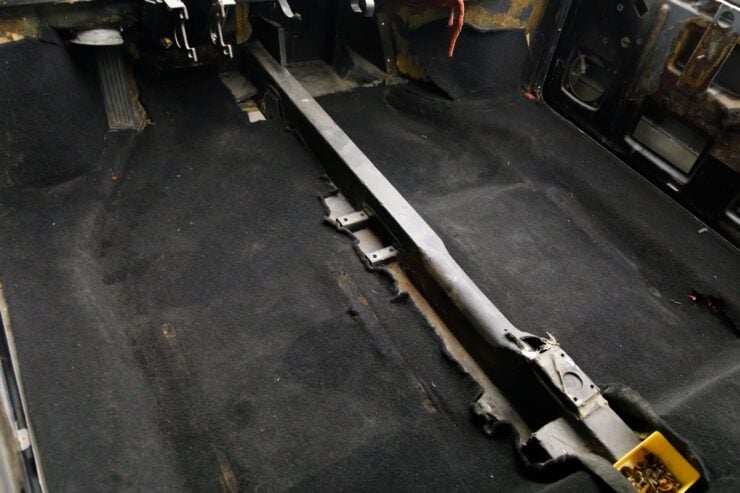

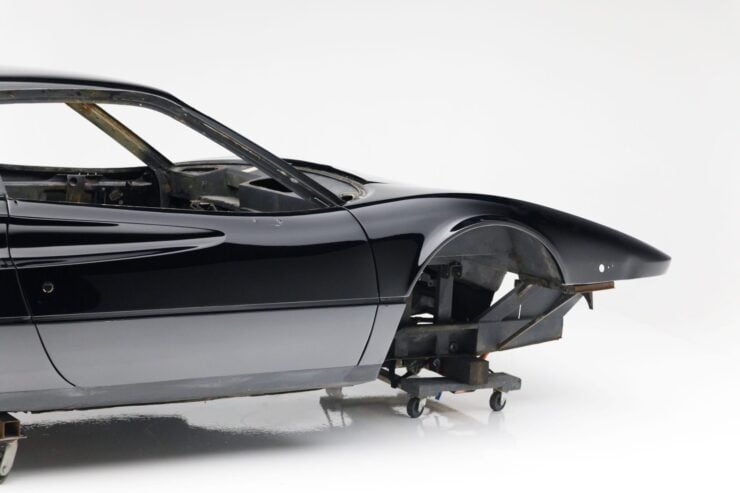
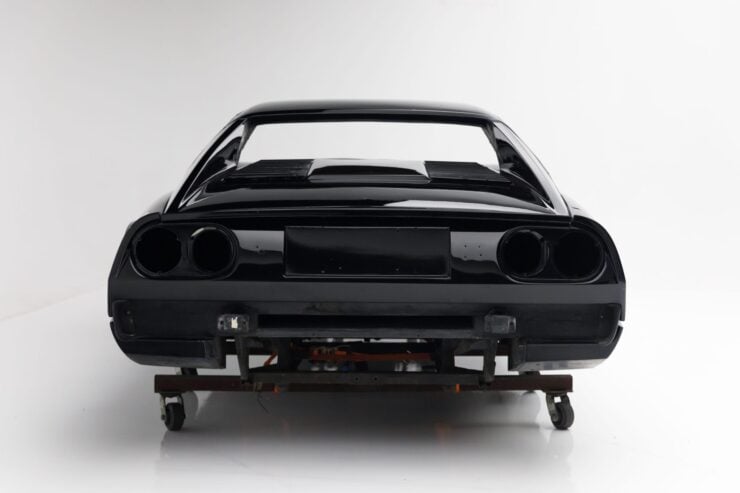

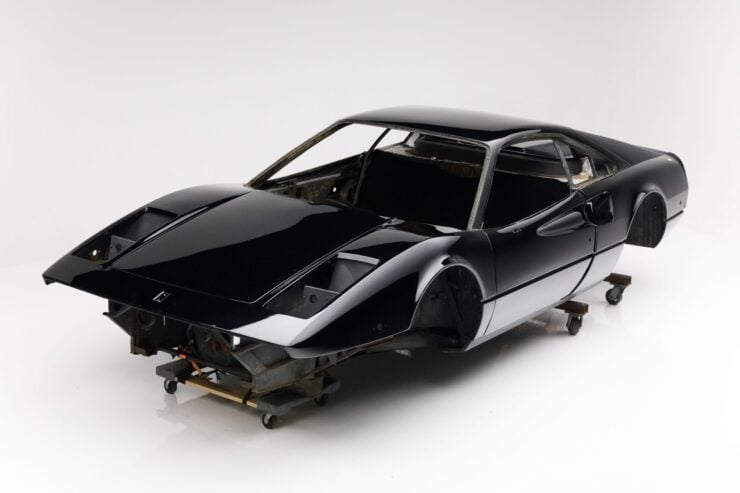

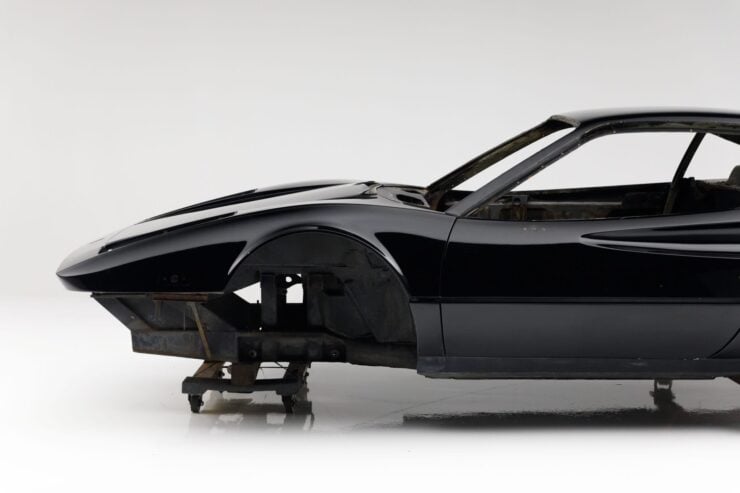
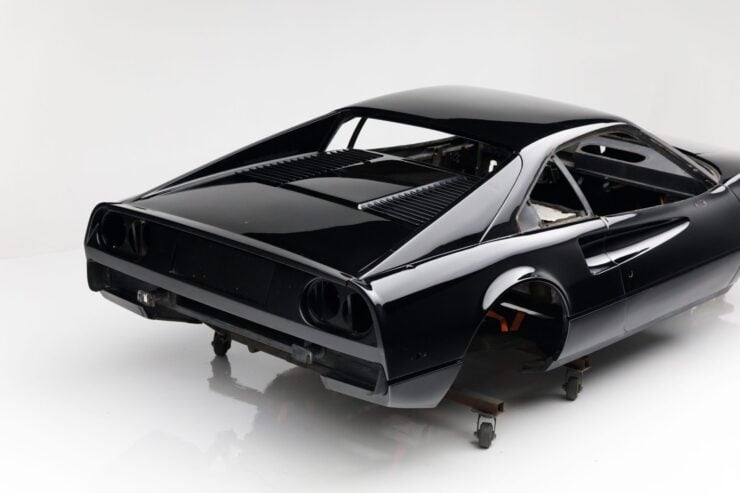
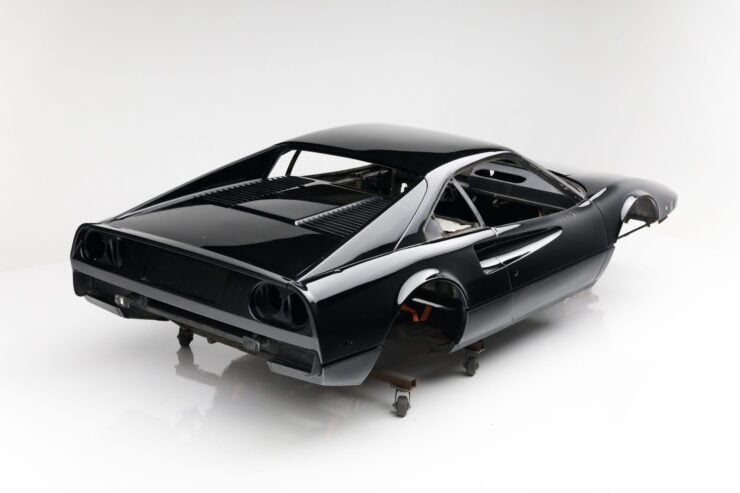
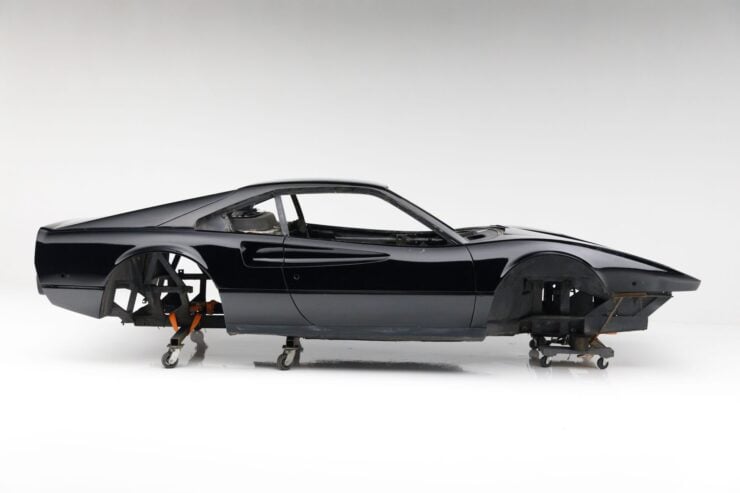
Images courtesy of Bring a Trailer

